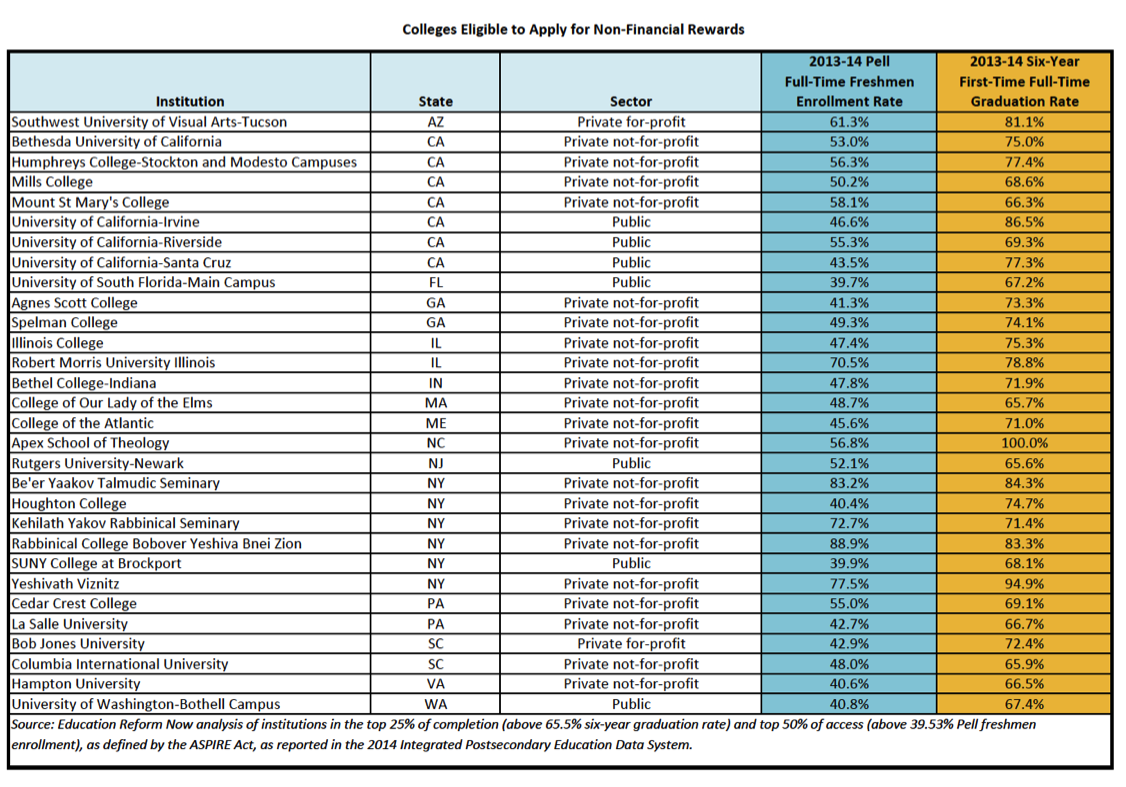Today, Senators Chris Coons (D-DE) and Johnny Isakson (R-GA) unite in their aspiration to reform higher education, picking up an idea we most recently floated here (pp. 57) and earlier here and here.
While the need for a postsecondary degree has never been greater, our nation’s colleges face gross inequities in their capacity or willingness to meet that demand. Some colleges do a great job of doing the hard work to enroll students from low- and middle-income families but have little financial resources to support students well through graduation. Other colleges have great financial resources and support services but are not doing all they can to enroll their fair share of talented low-income students.
Hoping to address these extreme disparities in higher education, Senator Coons, a Democratic member of the Senate appropriations committee, and Senator Isakson, a senior Republican on the Senate education committee, are introducing legislation today to embolden high-performing colleges to open their doors to more students from working-class and middle-income families while also providing much needed financial support to struggling under-resourced colleges.
Here’s how the bipartisan ASPIRE Act would work:
- Colleges that fall in the bottom 5% of four-year institutions on their enrollment of Pell Grant-eligible full-time freshmen will be identified and given one hold-harmless year plus three years to improve. Colleges that don’t improve will pay a fee in order to continue participating in federal college loan programs.
- Colleges that fall in the bottom 5% of four-year institutions on their six-year graduation rates would have the option to receive up to $2 million a year for four years — $8 million total – to improve and meet bare minimum graduation metrics after one hold-harmless year. But if they don’t improve, they would gradually have to return portions of the assistance money and ultimately new students would lose access to Title IV funds for three years.
- Colleges that are already making strides to improve completion rates will be able to apply for new competitive funds to continue improvement. Priority will be given to historically black colleges and universities (HBCUs) and other minority-serving institutions.
- Colleges that are high-performing on access and completion will also be able to apply for non-financial rewards, such as bonus points in federal competitive grants and/or alleviated regulatory burden.
Colleges like Franklin and Marshall and Georgia State University show that much can be done to boost the enrollment of low-income students and improve graduation rates. Spurred by an identity crisis, leaders at Franklin & Marshall College hired a new president in Dan Porterfield who committed to boosting the college’s enrollment of working class-students. With additional outreach, programming, and nearly doubling their financial aid budget, Franklin and Marshall was able to triple their enrollment of low-income students from 5 percent to 17 percent in only three years.
Likewise, Georgia State found a committed president in Mark Becker and vice provost Tim Renick who used predictive analytics and a student advising model in addition to a whole host of targeted programming efforts such as summer academies, freshmen learning communities, and emergency grants to improve student success rates. Today, Georgia State has raised the graduation rate for minority students by over 25 percent over 5 years while ensuring zero gap with the rest of the student body.
Knowing that it can and has been done, all colleges should feel inspired and compelled to improve. Presented below are illustrative lists of colleges that currently fall in the bottom 5% on college access and success as per our reading and analysis of the Coons-Isakson bill text. Note that these are dynamic lists – no college would face any penalty until at least four years after implementation and only if no improvement occurs. High-performing colleges on access and success that may apply for non-financial rewards are also listed at the bottom.
Colleges in the Bottom 5% on Access
Download list here
Colleges in the Bottom 5% on Success
Download list here
Colleges Eligible to Apply for Non-Financial Rewards
Download list here




